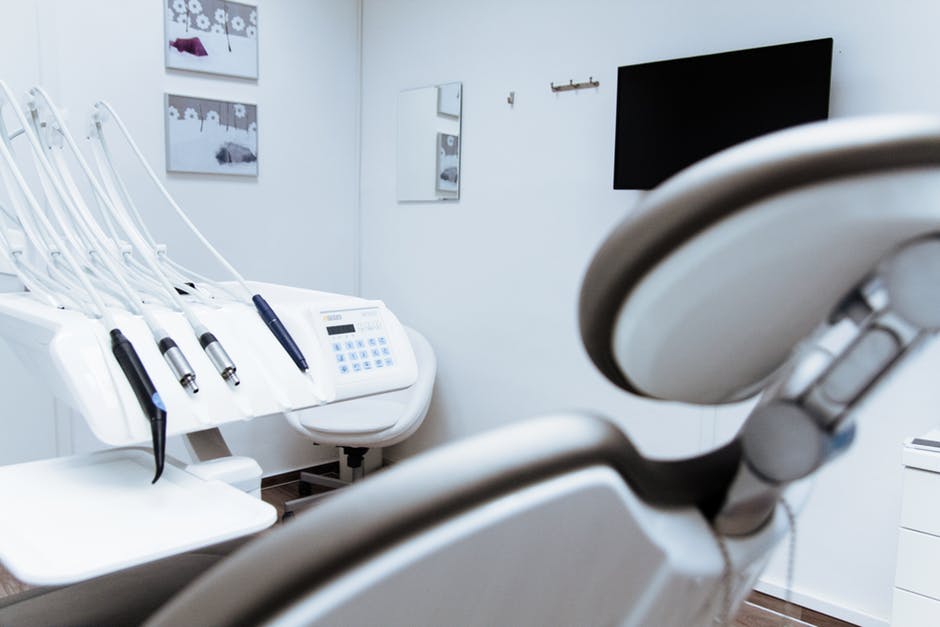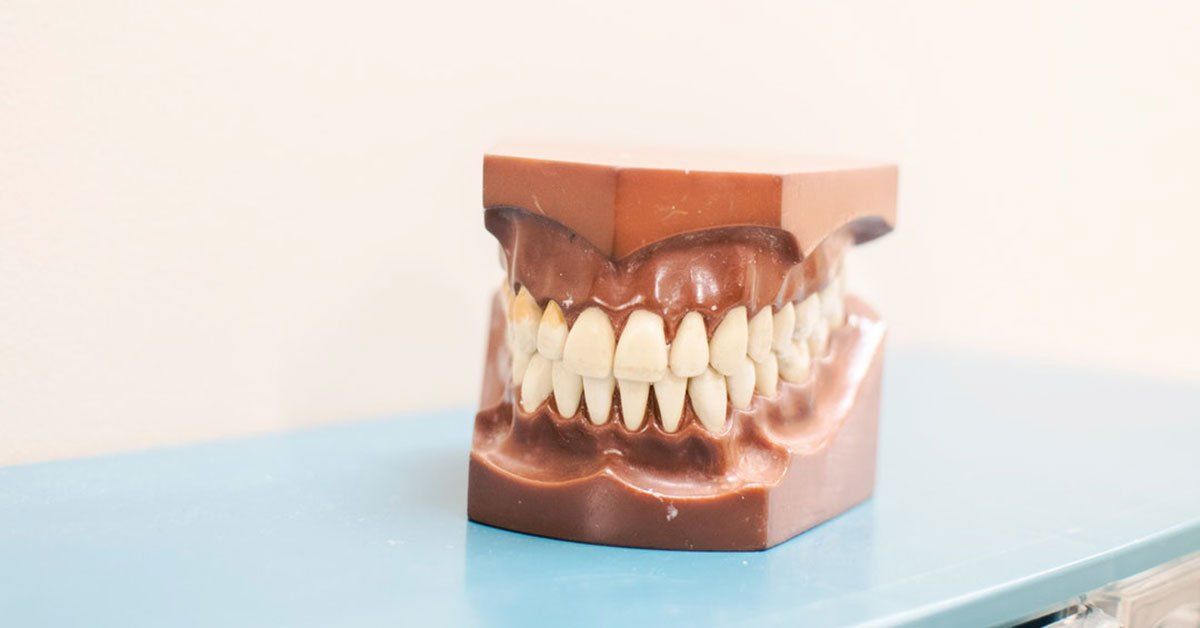Blog
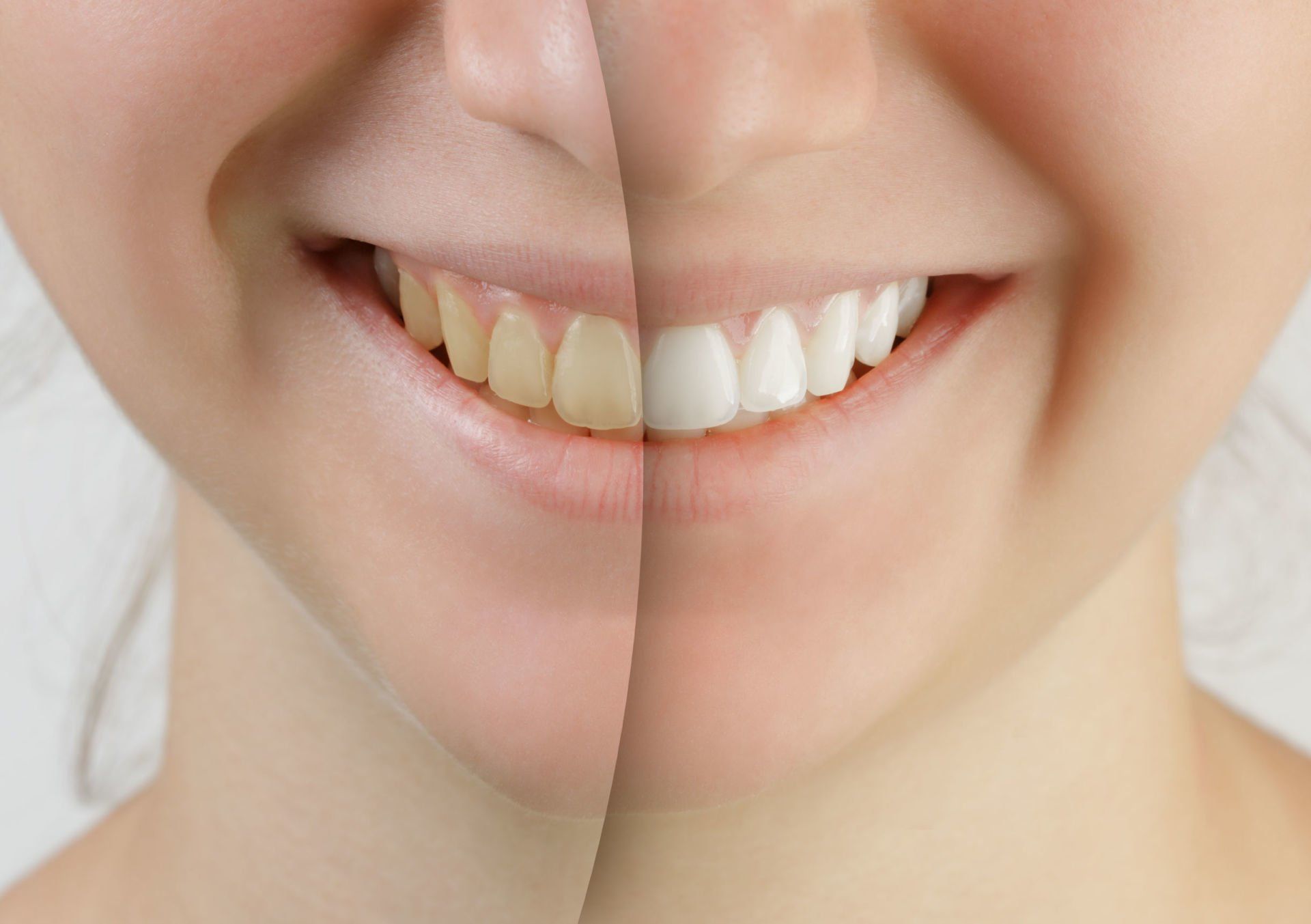
Many of us wish that our smiles were a little whiter, but is it something that’s worth risking your health for? The good news is that teeth whitening methods have come a long way over the last few decades and are completely safe for most people. However, there are still some important factors to consider as you decide whether to start treatment.
To Whiten or Not to Whiten?
Several factors of our modern lifestyles actively work against our ability to maintain white teeth, including:
· Drinking coffee, tea, or other dark liquids that can leave stains
· Smoking cigarettes or using other tobacco products that contain tar
· Not brushing your teeth often enough, or not brushing thoroughly enough when you do
· Tooth trauma or injury
· Staining can also occur from dental fluorosis, as well as from taking tetracycline antibiotics at a young age.
Regardless of why your teeth are stained, at some point you will likely wonder whether to look into teeth whitening treatment in order to brighten up your smile. Keep in mind, as long as the teeth are free of cavities and your gums are healthy, there is little medical harm in stained teeth.
So, the decision really rests on your personal preference and the how you feel about your smile. We can’t make this decision for you, but we can assure you that professional teeth whitening methods are safe should you choose to do it.
Evaluating Treatment Options
Once you’ve decided to move forward with teeth whitening treatment, the next step is to decide whether to visit the dentist’s office or try an at-home solution. As you might imagine, professionally trained dentists are able to use higher concentrations of peroxide for whitening treatments versus what is available for at-home use. However, with the higher dose comes the expertise of a trained professional so you can rest easy knowing that the treatment is being administered properly.
Other Considerations
While the American Dental Association considers teething whitening safe, it is generally not recommended for pregnant women or nursing mothers. Consult your doctor and ask for safe alternatives.
Teeth whiteners, either at home or when professionally applied, can increase the sensitivity to hot and cold temperatures. This can usually be managed by using toothpaste for sensitive teeth or with over-the-counter pain relievers. If you already have sensitive teeth, ask your dentist about alternative whitening options.
If you are uncertain about whether something in your dental or medical history would be affected by teeth whitening, the best thing to do is ask your dentist. No question is too silly or trivial; any good dentist or hygienist should answer all of your questions thoroughly and professionally.
At Columbia Pike Family Dentistry, we can help you decide whether teeth whitening is right for you, and what approach might work best to get the smile you desire.
Learn more about Zoom! In-office Teeth Whitening
At Columbia Pike Family Dentistry in Arlington VA, we recommend Zoom! in-office tooth whitening. You relax comfortably in the dental chair while a trained technician applies the Zoom! deep-bleaching gel. As you listen to music or watch a movie, a special light, focused directly on your teeth, activates the gel. It penetrates deeply, breaking up even tough stains and discoloration. The hygienist reapplies the gel every 15 minutes for three cycles, so a full treatment takes only about an hour. Contact us today to learn more about the services we offer or to schedule a consultation.
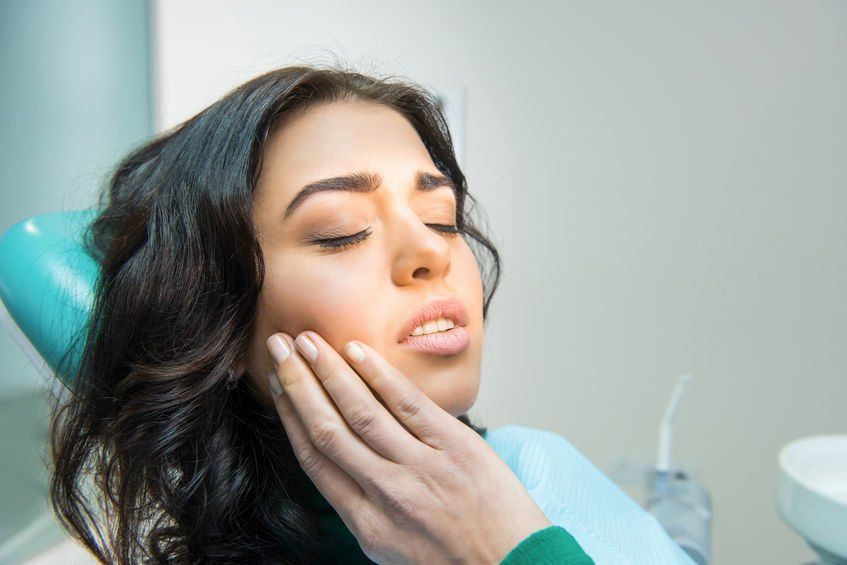
We all have bacteria in our bodies. Some bacteria are necessary and helpful, while others can cause harmful infections that lead to illness. If left untreated, the cavity-causing bacteria in our mouths can cause infections in our bodies.
How are Abscesses Formed?
When bacteria from the food we eat gets stuck in our teeth and gums, the result can be an infected tooth, and in some cases, an abscess.
An abscessed tooth can have several symptoms, including throbbing pain near a tooth or your gums, pain that is worse when you lie down, pain, swollen gums, tooth sensitivity, a foul taste in your mouth, and/or fever. When an abscess ruptures, you will almost immediately feel better. You may also have a bad taste in your mouth from the draining pus.
An abscess in a tooth is caused by untreated tooth decay, periodontal disease, or a crack in a tooth. An abscess is a pocket of pus in the gum line, root, or surrounding bone of the teeth. Dentists fix an abscess by draining it so it doesn’t spread into the bloodstream. If this happens, it’s called “bacterenemia.” In healthy individuals, their immune system will likely destroy the unfamiliar bacteria. But, in older adults or individuals with compromised health, the bacteria in the blood may not be destroyed.
Bacteria in the blood can move around the body, spreading infection and leading to serious complications. It can travel to places such as the lungs, causing pneumonia, or to the brain, causing meningitis.
Types of Abscesses
If you suspect you have an abscess in your mouth or if your dentist finds one during your next exam, don’t panic. Here are the three most common types of oral abscesses and how they’re treated.
· Gingival or Gum Abscess: “Gingival” means that the abscess is in the gum tissue of the mouth. When this is the case, your dentist will need to remove or drain the infection. If it has spread, a root canal or tooth extraction may be necessary.
· Periodontal Abscess: Periodontal disease is when the gums and bone, or “periodontal tissues” that hold our teeth in place are infected. Periodontal abscesses are most common in individuals with untreated periodontal disease. Your dentist will conduct a variety of exams to determine what course of treatment best suits your case. It may include a deep cleaning to remove any plaque that is stuck beneath the gum line.
· Periapical Abscess: Periapical disease happens as a result of your body fighting back against bad bacteria. When this occurs, tissue retreats away from the source of the infection. It creates a space for our body’s defense system to fight right up next to the infection. A periapical abscess forms when the infection spreads and creates a collection of pus at the root of a tooth. Dentists will often drain a periapical abscess and prescribe antibiotics to help eliminate the infection.
Can a Tooth Abscess be Fatal?
While it’s rare to die from complications with a tooth abscess, it can happen. Every year there are cases of a tooth infection leading to death. A 9-year study found that a total of 61,439 hospitalizations in the U.S. were primarily attributed to periapical abscesses. Of those hospitalizations, 66 patients died in the hospital.
If left untreated, the infection from a tooth abscess can spread throughout the body. The infection can enter your bloodstream or bones and make its way to vital organs. An abscessed tooth can cause sepsis, pneumonia and Ludwig’s angina, which is an infection under the tongue that causes swelling and difficulty breathing.
All abscesses should be treated by a dentist, even if they have already ruptured. A dentist will examine the area and clean it out to ensure the infection doesn’t spread.
Visit Columbia Pike Family Dentistry to Maintain a Healthy Smile
A healthy smile is a valuable asset in everyday life but requires proper care, including to help prevent infections and gum disease. At Columbia Pike Family Dentistry, we want to help keep you healthy and happy, and that starts with regular dental visits. We take measures to protect both your health and your wallet, by detecting or preventing potential problems. Contact us today at 571-312-4111 to make an appointment for a check-up and cleaning, or for all of your other dental needs. We are currently open and following all CDC guidelines to safely help you with all of your dental needs.
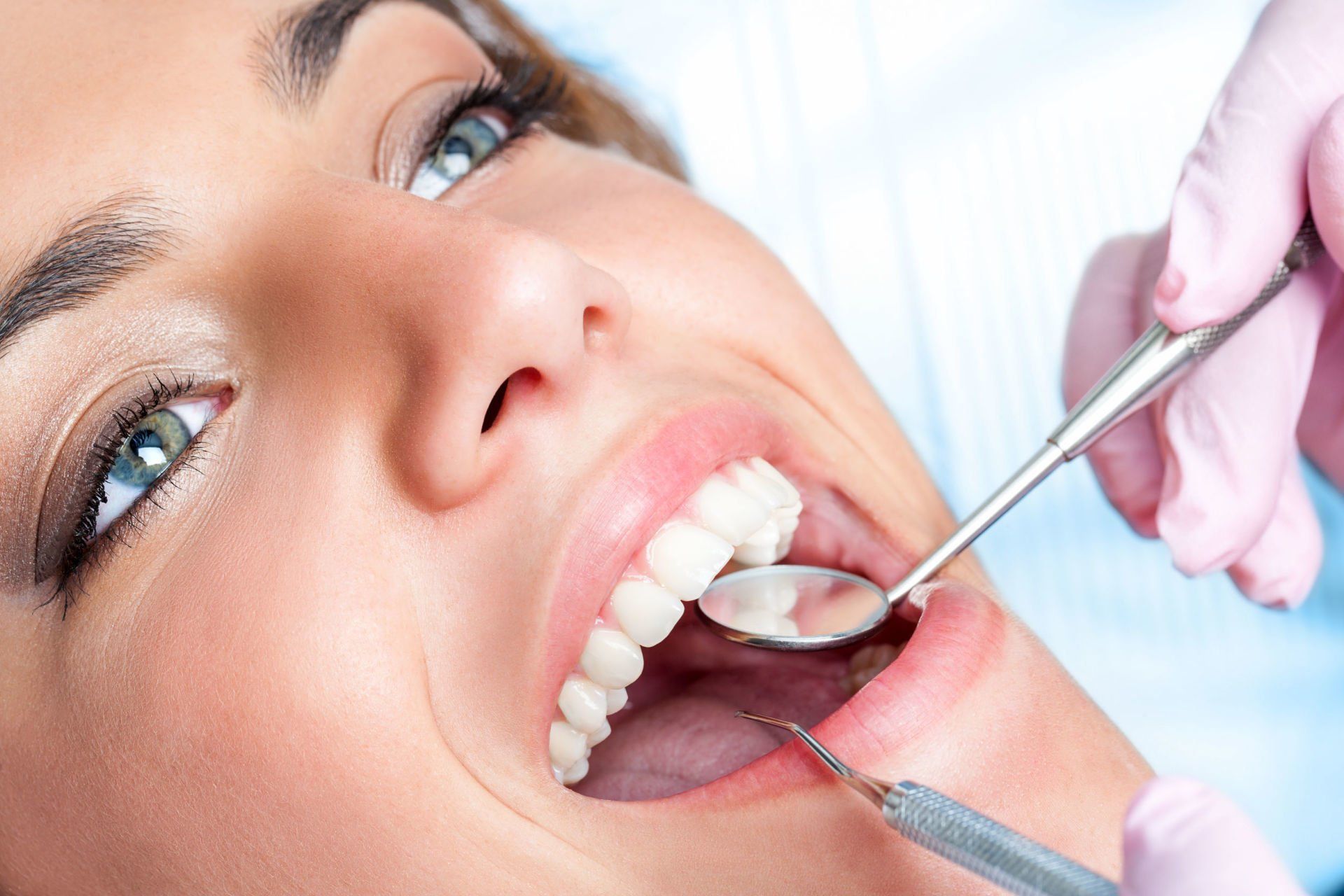
We’ve all heard that you should visit the dentist every six months, but is it really that important? Simply put, yes.
One of the most compelling reasons for paying a visit to your dentist regularly is prevention. Poor dental hygiene can lead to gum disease and tooth decay and loss, and can have negative effects on overall health.
According to the Center for Disease Control, nearly 50% of adults in the US. are affected by gum disease. Over time, untreated gum disease causes the gum to separate from the teeth, forming a bacteria-filled pocket that becomes infected. As the disease progresses, the pockets become deeper and the treatments become more extensive, more expensive, and more time-consuming. Periodontal disease is the number one cause of adult tooth loss in the US. Ignoring it could allow the disease to deteriorate the bone and gums so badly, teeth will need to be extracted.
Keep your Teeth and Gums Healthy
Home dental care, as well as regular dental check-ups, can help to keep teeth and gums healthy and prevent early tooth loss. The first step to good oral health is brushing and flossing at home. Doing so gets rid of lingering food particles, combats bacteria that causes bad breath, and helps to prevent buildup of plaque. While it’s generally difficult to get a deep cleaning at home, a dentist has the tools to get to those hard to reach places and remove any tartar that has built up. We check for cavities and can keep an eye on any reoccurring trouble areas you may have.
Besides cleanings every six months, be sure to take care of your teeth and gums between regular dental visits. Plaque is always forming on your teeth, but you can manage it by brushing and flossing regularly.
Here are some tips for good oral care at home:
· Brush your teeth at least twice a day. Be sure to use a toothpaste that contains fluoride.
· Floss daily.
· Use a mouthwash to help control plaque bacteria. This will also help to keep your breath fresh.
· Eat a healthy diet, and quit the use of tobacco products, if applicable.
· Avoid chewing ice and hard candies and never use your teeth as a substitute for the right tool.
· Reduce consumption of sugary foods and beverages from your diet, and chew sugar-free gum that contains xylitol.
At Columbia Pike Family Dentistry, our goal is to help our patients understand the importance of regular visits for their overall health. In addition to home care, you should have a regular dental visit at least twice a year, or as recommended by your dental professional. Most dental health problems appear gradually, and an appointment every six months is enough to catch these problems before they become serious.
Visit Columbia Pike Family Dentistry to Maintain a Healthy Smile
A healthy smile is a valuable asset in everyday life but requires proper care, including to help prevent gum disease. At Columbia Pike Family Dentistry, we want to help keep you healthy and happy, and that starts with regular dental visits. We take measures to protect both your health and your wallet, by detecting or preventing potential problems. Contact us today at 571-312-4111 to make an appointment for a check-up and cleaning, or for all of your other dental needs.
Are You a New Patient?
Take advantage of our new patient offer for only $159. It includes a comprehensive exam, x-rays, and a healthy mouth cleaning. The offer is for new patients only and may not be combined with any other offer, discount, insurance, or reduced-fee program. Be sure to mention this offer to receive the discount. Book your first visit here.
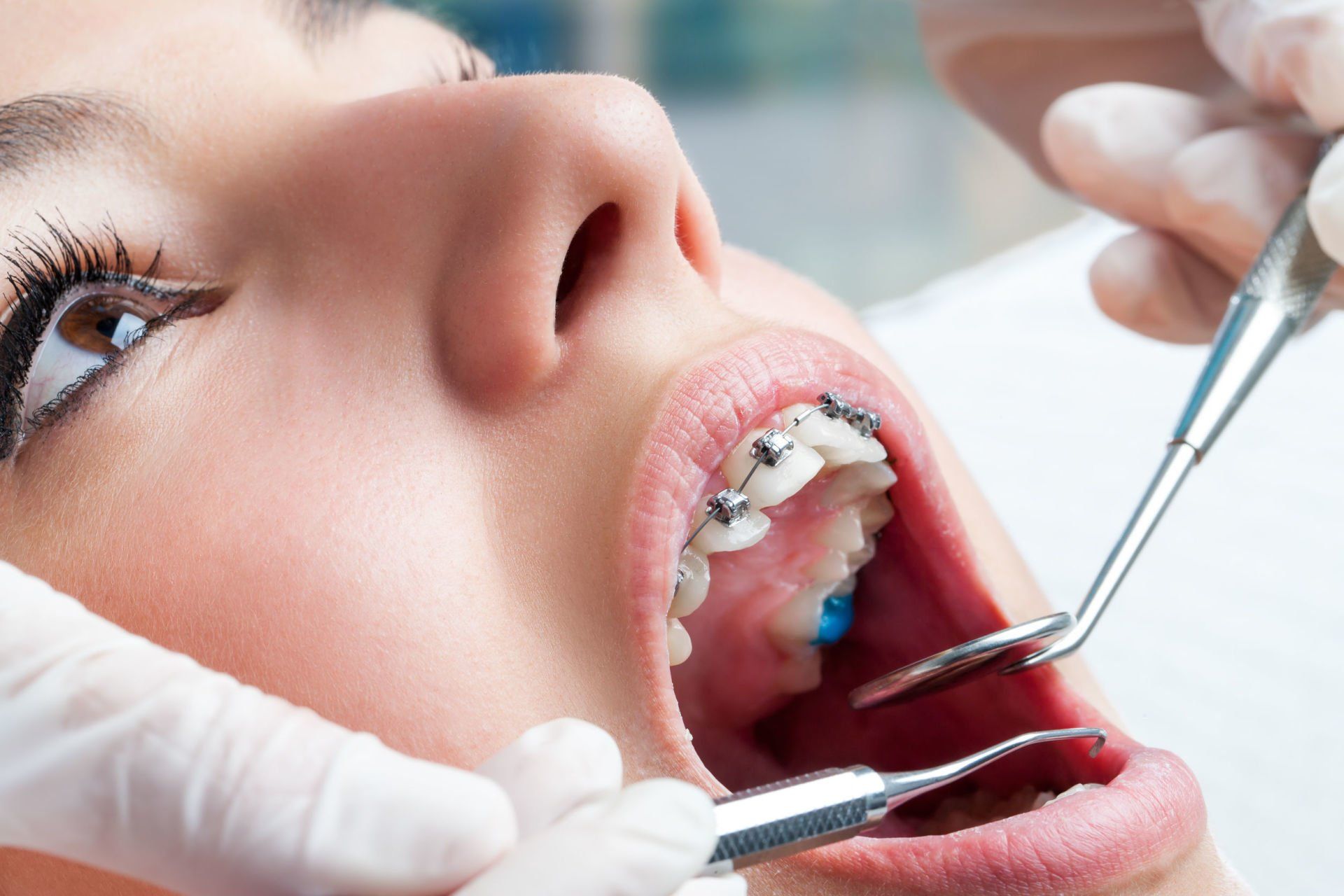
Many people, especially parents, ask the question: what is the best age for braces? The truth is, there’s no universal right answer to this question, but we can draw from our years of experience to provide some advice on factors to consider when deciding the best age for braces.
Ages 7-9
Some parents have children evaluated for braces as early as age 7. This isn’t necessarily a bad idea. Braces may not be applied that early, but it can give you a roadmap of what future treatment might look like.
These are some things to keep in mind for younger children:
· By age 7, most baby teeth have started to come in and we can get a good sense of what the alignment of permanent teeth will look like. In some cases, braces or partial teeth aligners may be applied at this stage if a child is having difficulty talking or eating due to poor teeth alignment.
· A child is also a candidate for early braces if he or she has protruding teeth, a crossbite, or tooth crowding. Catching and treating these symptoms early can prevent them from becoming worse as more permanent teeth arrive.
· If your child needs braces at an early age, be prepared to help him or her take care of them. Wearing braces can provide a valuable lesson in self-care but may require additional intervention until good habits are formed.
Ages 10-14
Most children who receive braces begin treatment between the ages of 10 and 14. At this age, baby teeth have completely fallen out and the jaw is stable enough to support long-term orthodontic treatment.
These are some things to keep in mind for preteens and teens:
· Braces come in several varieties from traditional metal brackets to ceramics and invisible aligners. What used to be a stigma about wearing braces has largely been eliminated due to the prevalence of braces among adolescents, but it is important to talk with your child about the changes to his or her appearance that will come as a result of wearing braces.
· Unlike young children, teens and pre-teens should be mature and responsible enough to manage braces on their own with little parental intervention. The average time for wearing braces at this age is around 2 years.
· Once braces come off, a retainer will likely be needed to keep teeth in their correct alignment and prevent additional treatment in the future.
Ages 14+ and Adults
Contrary to what some people might think, you are never too old for braces! Many adults did not have access to orthodontics as kids or delay getting braces for other reasons.
These are some things to keep in mind for teens and adults:
· Think of teeth the way you would any other bone on your body. They do stop growing at the end of adolescence, but it’s still possible to correct them throughout your life. If your arm breaks, it can heal and be put back into place with a cast. Teeth are no different.
· As an adult, you likely already have an established routine that will need to be modified to account for braces. You may need to alter your diet, your morning and evening schedules, or even some of the activities you do.
· No matter what changes you need to make, keep in mind that they are short-term sacrifices for long-term gains in confidence and dental health. Wearing braces for a few years can save you from more serious dental issues down the road.
Thinking About Braces? Make an Appointment for More Information!
In the end, the best way to know the best age for braces is to receive a professional evaluation from an experienced orthodontist. At our practice, we can help both adult and child patients straighten their teeth with metal braces, ceramic braces, or Invisalign. Call us today to schedule a consultation. Together, we can determine which treatment plan will best meet your needs.
Special Offer on Traditional Braces: Only $3,699!
For a limited time, Columbia Pike Family Dentistry is offering traditional braces for a special price of $3,699. Contact us today at 571-312-4111 for more information on this amazing offer!
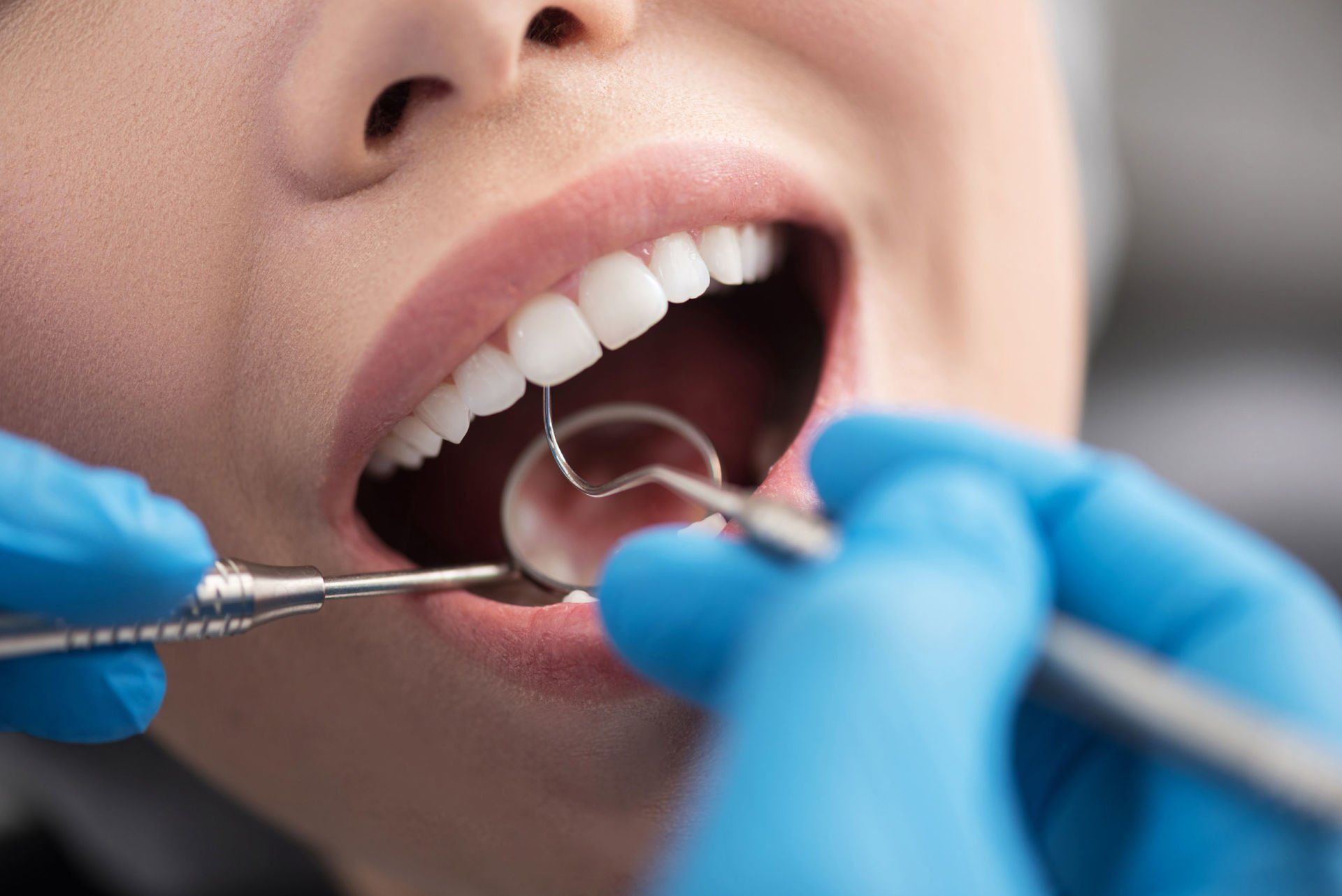
Most people don’t think their family dentist could save their life, but the truth is that they can. This year, more than 50,000 Americans will be newly diagnosed with oral and throat cancers. When detected in the early stages of disease, these cancers have an 80– 90% chance of survival.
Unfortunately, the reality is that most of oral cancers won’t be diagnosed until later stages. This is why it is important to review the risks and signs of oral cancer.
Risks are as follows we:
· Prolonged smoking and alcohol use: The most obvious of risks of oral cancer are smoking and drinking alcohol over a long period of time.
· HPV-16 virus (human papilloma virus): If you or your partner/spouse has a history of HPV (the virus associated with cervical cancer in women), your risk for developing throat cancer may increase. It is known that men have a three times greater chance of developing throat cancer due to the HPV virus than women.
· Generic predisposition:
There are a small percentage of people (about 7%) who develop oral and throat cancers with no apparent cause. In these cases it is believed that a genetic predisposition may exist.
Knowing the signs of oral and throat cancersThe following list contains the signs and symptoms that can be associated with oral and throat cancer:
· A sore or lesion that does not heal within two weeks
· A white or red patch on the gums, tongue, tonsil, floor of the mouth, inside of the cheek
· A lump or thickening of the cheek
· Difficulty chewing or swallowing
· Persistent sore throat, hoarseness, or changes in your voice
· Difficulty moving the jaw or tongue
· Swelling of the jaw that can cause a denture to fit poorly
· Persistent swollen lymph nodes under the chin and along the sides of the neck
There is no age discrimination when it comes to oral and throat cancer. These cancers can affect anyone at any age.
Each year the death rate for these cancers continues to grow. By raising awareness and knowing your risks for developing the disease we can decrease the death rate and increase the survival rate.
Worried about oral cancer? Discuss your concerns with our dental team. We will examine your lips, tongue, throat, gums and feel your lymph nodes. It only takes 4 minutes and it could save your life.
Special Offer for New Patients Only!
Are you or a friend a new patient interested in a dental exam? For only $159, we are offering a comprehensive exam, x-rays, and healthy mouth cleaning. Be sure to mention this offer to receive discount. This is for new patients only and it may not be combined with any other offer, discount, insurance, or reduced-fee program. Regular value is $427!
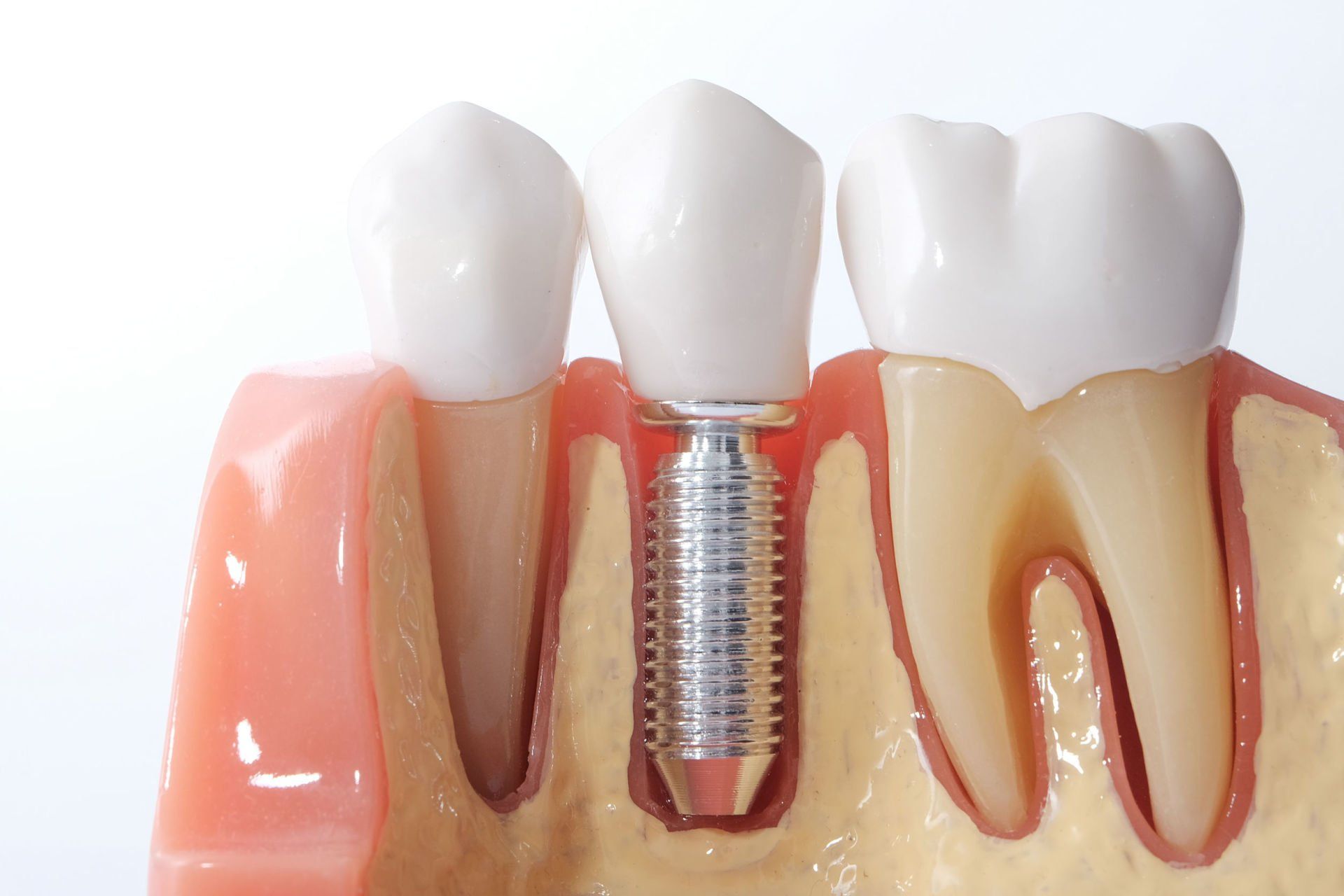
There is nothing quite like seeing the beaming smile of someone you love. Whether it’s your parent, spouse, child, or a friend, a smile can change your entire day for the better!
Unfortunately, many of us are too self-conscious to show off our smile, due to missing teeth. Missing teeth can affect both the appearance of your smile and your self-esteem. As experts in cosmetic dentistry, we have an easy, cost-effective way to replace those missing teeth and cause your smile to radiate brighter than ever before. Dental implants offer a complete replacement for your natural teeth.
It is common for patients to opt for dental implants after the removal of one or more of their natural teeth as a long-term replacement solution. Many patients prefer implants because they are the closest duplication of a natural tooth that modern dentistry has to offer. They function, look, and feel like “real” teeth! Here are ten additional reasons why you should consider dental implants to restore your smile and your bite:
1. Natural-looking replacement
Dental implants permanently attach themselves to your jaw because they are made of titanium, a material known for its ability to fuse with natural bone tissue. Once fused, a crown sits atop the titanium base. This crown looks, feels, and functions just like a natural tooth.
2. Helps to preserve facial aesthetics
Not replacing missing teeth in a timely fashion causes bone loss in the jaw over time, which can lead to sunken facial features. Reintroducing pressure on your jaw by chewing with a dental implant in place stimulates bone production, preventing or even reversing bone loss.
3. Long-lasting
Dental implants last longer than any other tooth replacement, as they become a permanent fixture in your jaw alongside your natural teeth. Crowns are available in several different materials, but the most popular is porcelain, which is incredibly durable.
4. Improved function
Following tooth implant surgery, you will be able to eat and speak more comfortably because dental implants fix into place and do not shift around in your mouth as dentures can.
5. Cost-effective
Though they seem costly initially, if you consider that dental implants are likely to last upwards of 20 years, they’re cost-effective compared to other solutions like dentures and bridges. These alternatives may need more frequent repairs and replacements.
6. Bone loss benefits
Bone is a living tissue that does not rebuild itself without regular stimulation. When a tooth is missing and not replaced, this lack of stimulation leads to bone loss. It is an issue that goes beyond a purely cosmetic concern, as it can leave your jaw more susceptible to fractures and impact your suitability for dental implants in the future.
7. Low maintenance
Compared to dentures, implants are incredibly low maintenance. They need daily cleaning in the same way you clean your natural teeth, but aside from that, no maintenance is required.
8. Improves confidence
One of the most negative aspects of missing teeth is that people often need to change what they eat, due to a weaker bite from inferior tooth replacement methods. They may also feel self-conscious and avoid smiling or laughing. Being able to eat, drink, smile, and laugh like you used to provides an incredible confidence boost.
9. Safer for natural teeth
Your adjacent teeth are completely safe alongside your dental implants. Conversely, other replacement methods such as a bridge can weaken the teeth on either side, as they must provide structural support for the bridge.
10. Cavity resistant
The materials used in the production of dental implants are artificial and, therefore, impervious to cavities. You will still need to care for your dental implants in the same way you would a natural tooth, and your gums will need daily cleaning.
Dr. Malika Kohli has the specialized training in a variety of implant therapies to provide full dental implant procedures (extraction, implant placement, and porcelain crown restoration) at one location here in Arlington VA, without the need to refer patients out to another practice.
Special Offer on Dental Implant: $2,999 for Everything!
For a limited time, Columbia Pike Family Dentistry is offering dental implants for a special price of $2,999 per implant. This fee includes everything: Implant, Abutment, and Crown. Contact us today at 703-297-8369 or visit https://www.columbiapikedentistry.com/dental-implants for more information on this amazing offer!

Did you know that teeth whitening is the most common cosmetic dental procedure performed by dentists? People are spending $1.4 billion a year on average for white teeth, and the process is growing in popularity each year. As you can see, the trend of transforming yellow teeth into sparkling white teeth is not just a passing fad!
Given its popularity, questions about tooth whitening still remain --- just how white is too white and how white should you go?
How Teeth Shades Work
To figure out which shade is right for your teeth, it’s important to know how teeth shades work. The color of your teeth is comprised of three different values – hue, chroma, and value. Hue is the existing tone of the teeth and can usually be separated into gray, yellow, reddish gray, or brown groupings. Chroma measures the intensity of the hue, while the value is the amount of black or white in a tooth. According to the American Dental Association, the people who see the most success with teeth whitening are those who have a yellowish hue. Unfortunately, those with a gray hue have the least success with bleaching. Before beginning the whitening process, you have to identify where your teeth fall on a shade guide.
Should You Bleach to the Brightest Tone?
While you may be tempted to try and bleach your teeth to the brightest tone in the shade guide, we highly suggest that you resist the urge. For most people, simply brightening up their smile by two to three shades creates a great improvement.
Martin Zase, president of the American Academy of Cosmetic Dentistry, recommends that people should try to obtain a tooth color that matches the whites of their eyes. This helps create a natural look that doesn’t throw off the balance of your face.
Additionally, it’s important to consider your age and gender. As people get older, their teeth naturally darken. Therefore, it might be strange to see a middle-aged person with a pure white smile.
What Happens if You Overbleach?
While your teeth won’t fall out if you bleach them too much, it doesn’t mean you should do it too frequently. Those who overbleach often have an increased likelihood of decay, and overbleaching can cause side effects, such as temporary tooth sensitivity and pain. You’ll know when it’s time to stop bleaching when your teeth become bluish-white, as this means they have reached their maximum potential.
Teeth whitening can produce great results for most people that help them improve their appearance and self-esteem. If you’re ready to begin your whitening journey, there is no time like the present!
Learn more about Zoom! In-office Teeth Whitening
At Columbia Pike Family Dentistry in Arlington VA, we recommend Zoom! in-office tooth whitening. You relax comfortably in the dental chair while a trained technician applies the Zoom! deep-bleaching gel. As you listen to music or watch a movie, a special light, focused directly on your teeth, activates the gel. It penetrates deeply, breaking up even tough stains and discoloration. The hygienist reapplies the gel every 15 minutes for three cycles, so a full treatment takes only about an hour. Contact us today to learn more about the services we offer or to schedule a consultation.
All Rights Reserved | Columbia Pike Family Dentistry

